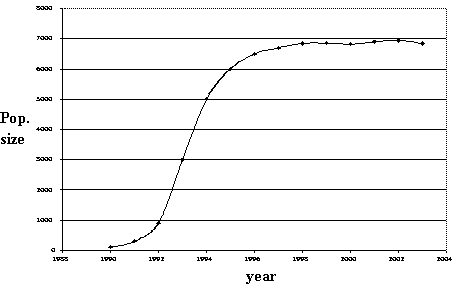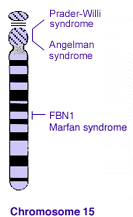


Preview
Material for Exam 3 - Spring 2004 |
||||||||||||||||||||||||||||||||||||||||||||||||||||||||||||
A group of campers decided to spend the night in an alpine meadow in which a species of buttercup (Ranunculus sp.) is abundant. This species is a perennial (it lives for several years, and reproduces annually). It just so happens that this meadow is part of an on-going research project, and scientists return every summer to count the number of individuals present in permanent plots. For nearly 20 years, populations of buttercups in plots measuring 2 square meters have been remarkably stable, and support an average of 13 individual plants. The campers cleared an area (about 3 square meters) all the way to bare soil to build a campfire, unknowingly destroying all the vegetation in one of the scientists' permanent plots. For four years following the campers’ visit, scientists collected the following data from six plots in the meadow at the END OF EACH growing season.
|
||||||||||||||||||||||||||||||||||||||||||||||||||||||||||||
| Common murres (arctic seabirds) typically nest in large cliffside colonies and dive for fish that they carry back to their hungry chicks. In 1990, the researchers began recording murre numbers in a colony that had just recently formed on a different island. The population increased rapidly at first, and then stabilized. | ||||||||||||||||||||||||||||||||||||||||||||||||||||||||||||
 |
||||||||||||||||||||||||||||||||||||||||||||||||||||||||||||
 source source |
||||||||||||||||||||||||||||||||||||||||||||||||||||||||||||
| Flo
Hyman led the 1984 U.S. Olympic Women’s Volleyball team to a silver medal.
This outstanding player, who was over six feet tall, died without any external
signs while resting on the bench during a professional volleyball game just
two years later: Her aorta (the main artery carrying blood from the heart to
the brain and body) spontaneously ruptured. An autopsy indicated that she suffered
from Marfan Syndrome, which resulted in both her height and her death. But
how? Marfan Syndrome results from a defective FBN1 gene which is found on chromosome
15. The protein fibrillin appears to be the common factor. It provides strength
and elasticity to connective tissue (including tendons, ligaments and artery
walls), and is somehow also involved with promoting growth. People with Marfan
Syndrome lack a sufficient amount of fibrillin in their artery walls to keep
them elastic and frequently die from spontaneous rupture of their unusually
brittle arteries.
Neither of Flo Hyman’s parents
had Marfan Syndrome. This might appear surprising because Flo, like all
living people with Marfan Syndrome, was
heterozygous (Mm) for the FBN1 gene. It appears that fetuses that are homozygous
for Marfan Syndrome die early in development. |
||||||||||||||||||||||||||||||||||||||||||||||||||||||||||||
 source |
||||||||||||||||||||||||||||||||||||||||||||||||||||||||||||
 source source |
||||||||||||||||||||||||||||||||||||||||||||||||||||||||||||
 source source |
||||||||||||||||||||||||||||||||||||||||||||||||||||||||||||
 source source |
||||||||||||||||||||||||||||||||||||||||||||||||||||||||||||
| Many African-Americans are concerned about sickle-cell anemia, in which the debilitating and typically fatal symptoms appear when a person is homozygous for the sickle-cell allele. (The heterozygous genotype actually confers resistance to the infectious disease malaria, which is spread by mosquitoes and especially prevalent in Sub-Saharan Africa.) | ||||||||||||||||||||||||||||||||||||||||||||||||||||||||||||
| “No Pain, No Gain” is something many athletes have heard from their coaches. Among other causes, the pain comes from the tearing of muscle fibers, which are composed of proteins that are not exported from the cell. The gain is the replacement of those fibers. | ||||||||||||||||||||||||||||||||||||||||||||||||||||||||||||
 source source |
||||||||||||||||||||||||||||||||||||||||||||||||||||||||||||
 source source |
||||||||||||||||||||||||||||||||||||||||||||||||||||||||||||